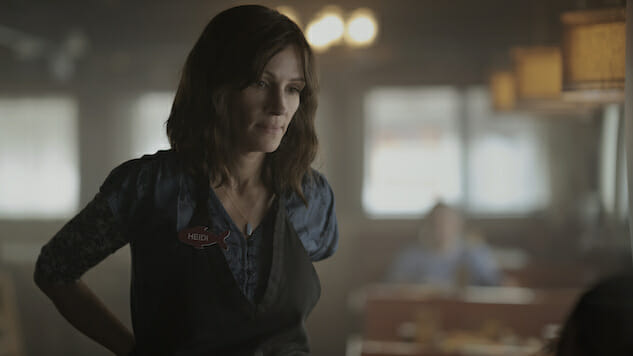What Homecoming and Dirty John Can Tell Us About How to Adapt Podcasts for TV
Photo: Jennifer Clasen/Amazon Prime Video
In a month that’s seen two high-profile podcasts, Dirty John and Homecoming, adapted for TV, understanding the industry’s clamoring hunger for IP and the built-in audiences they bring isn’t the hard part. The comic land grab continues and J.K. Rowling’s magic factory continues to spin jilted goodwill into gold. Podcasts are just the latest avenue of acquisition. What is new about the podcast trend is that watchers and listeners have the freedom of few guidelines in answering the key question: What’s the best way to make the transition from a form still working to define itself—one partway between audiobook and radio play—to the small screen?
How the podcasts themselves approach their form often comes down to genre: Lore, which saw its documentarian’s take on folklore adapted to a horror-ish series for Amazon, tells its stories like a historian, while some fictional podcasts, like Welcome to Night Vale, make the Lovecraftian most out of their listeners’ inability to see what they refer to. Then there are the narrative-building podcasts of the actual-play variety—role-playing games that generate fiction on their own, like The Adventure Zone or Friends at the Table, which use the language of cinema to spark the imaginations of players and listeners alike. Both are intensely visual experiences thanks to hosts that describe shots, camera movements, and montages to anachronistically apply a movie vocabulary to a radio audience. (In fact, the former has already been turned into a bestselling graphic novel.) And it works.
Often, it can work even better—or at least work more—than something like Homecoming, the podcast that spawned the Julia Roberts-starring Amazon series. Homecoming’s co-creator, Eli Horowitz, is no stranger to creating content with a specific medium in mind. His app/novel The Silent History is a wild and engaging use of technology to tell a serialized story—on that couldn’t be told any other way, which is one of the reasons it works so well. Understanding the format allows the story to achieve its greatest potential: A great melody works best in a pop hit.
Horowitz’s co-creator, Micah Bloomberg, commented on their approach in an interview with Vanity Fair: “It’s important to emphasize that we were really only trying to make a podcast,” he said, “because I think there’s a danger, if what you really want to do is write a movie or a TV show and you’re trying to kind of sneak your script into this audio format… [that] you’re not really taking the form seriously.” Leaning in to what makes a podcast a podcast—and not putting your TV script into a format that’s cheaper to develop for the sake of your résumé—can certainly do the form justice. But it can also lead to hokey storytelling moments that point out the limitations of the medium.
For instance, the podcast version of Homecoming features quite a bit of belief-suspendingly silly audio-based drama, twists, and mysteries. It’s a hammer-nail scenario that keeps our imaginations focused on what the show wants them focused on, eliminating too many questions that a TV show could answer with production design, acting, or split-screens. That’s not a problem, necessarily, but it is a formal quirk that bleeds into the narrative. Nobody talks on the phone this much, right?
As with radio dramas, the narrative podcasts that are apt for translation to TV gain a lot more nuance by virtue of spreading the storytelling around the various senses. On screen, we don’t just have language and sound effects to go by. And if, as in Homecoming, we’re detectives enjoying a mystery, attempting to crack components without solving it all, moving to TV gives us far more clues to play with—and the director many more ways to drop them.
-

-

-

-

-

-

-

-

-

-

-

-

-

-

-

-

-

-

-

-

-

-

-

-

-

-

-

-

-

-

-

-

-

-

-

-

-

-

-

-








































